Halberd Models Piper Enforcer (Model 1971)
The Airplane:
Over the years, many aircraft types have evolved become far more by having their existing piston engines replaced with turboprop powerplants.Less common is to eimagine a World War II-era fighter as a modernized, turboprop attack aircraft and market it to the government. This happened in the form of the Piper PA-48 Enforcer. First flown in 1971, four prototypes were built and demonstrated until their retirement in 1984.
The concept of modifying and remanufacturing P-51s began in the 1950s.The National Guard had retired the last active duty examples, and they were available on the open market at bargain prices. Trans Florida Aviation saw a business opportunity.
Their strategy targeted two potential customers: Civilian versions with the military equipment stripped out and replaced with additional fuel tanks and luxurious interiors. Second, modify existing military Mustangs with new avionics and weapons systems, optimizing them for ground attack, close air support, and counter-insurgency missions.
These Mustangs were renamed the Cavalier Mustangs; 19 were produced for a variety of civilian and military customers. In the late 1960s, one had a 1,630 shp Rolls-Royce Dart 510 installed. No sales resulted, but one entity became convinced of the airplane's potential.
Piper Aircraft purchased the rights to the turboprop Mustang and continued to develop the concept. Beginning with two Cavalier Mustangs, they installed massive, 2,445 shp Lycoming YT-55-L-9 turboprop engines. The addition of nearly 1,000 horsepower increased capability; this was the same engine used by the CH-47 Chinook helicopter.
Piper also constructed two clean-sheet versions of the aircraft in 1984, with a $12 million appropriation from Congress, giving the new prototypes the designation PA-48. These aircraft were evaluated by the USAF, but flown only by Piper test pilots. All four used a modified Douglas Skyraider propeller. To ease maneuvering at high speeds and low altitudes, the ailerons were equipped with a boost system from a Lockheed T-33, and the rudder was equipped with a yaw damper.
N482PE, the first of two Cavalier Mustangs modified in 1971, has been restored and is on display at the Air Force Flight Test Museum at Edwards Air Force Base in California.
The Kit:
Halberd Models is a Ukrainian aftermarket company. They have recently produced conversion sets in 1/48 and 1/32 for the Cavalier Mustang II, the Dart-powered conversion and the 1971 PA-48 prototype. For the PA-48, the full fuselage has the lower scoop removed.
Construction
The primary difference between assembling this kit and a normal Eduard P-51D is that one leaves out everything in the rear of the cockpit, and replaces that with the extra seat provided in the kit. The resulting interior is not actually accurate for a Cavalier Mustang, which had the upgraded interior. Using photos of the cockpit, the additional changes can be accomplished using Evergreen sheet.
The wingtip outboard of the aileron is cut off along the panel line, to mount the wingtip tanks. Additionally, one needs to drill out locating holes for the four additional underwing pylons under each wing; the Halberd instructions provide locating information. The vertical fin and rudder is cut off along the upper panel line, to attach the resin fin extension. Nothing involved in this work is hard to do.
Before joining the fuselage halves, the large exhaust must be glue into position in the right half; the mounting location is keyed to get it right so it will align with the hole when the fuselage is assembled.
The airplane used a canopy diferent in sizer and shape from the standard P-51 canopies in the Eduard kit. I used one of the Squadron vaduform canopies for the F-82 Twin Mustang, since these are not accurate for the new, accurate, Modelsvit kit. I took a kit canopy and cut off the lower frame, and mounted the clear section of the Squadron vacform canopy to it. Since the kit cockpit isn't actually right for the Cavalier Mustang, and I didn't have the information to modify it, I decided to close the canopy.
I attached the underwing pylons, the fin extension, tip tanks and ventral stabilizing fin with CA glue. No filler was necessary anywhere.
Painting and markings:
I planned to do this as a “what if” airplane assigned to the Zorros for operational test in Southeast Asia, and so I painted it in a one-off “night” scheme, freehanded with two shades of green, dark grey, and black undersides. Unfortunately, when it came time to fit underwing ordnance, I found nothing I had would fit with the flap lowered. Oh well...
I used spare decals from the ICM Counter-Invader B-26K for markings.
Overall:
This is an excellent conversion that is easy to do for a modeler who has done other conversions. Nothing is difficult. Highly recommended for P-51 Mustang fans.
Review kit courtesy of all you book buyers.
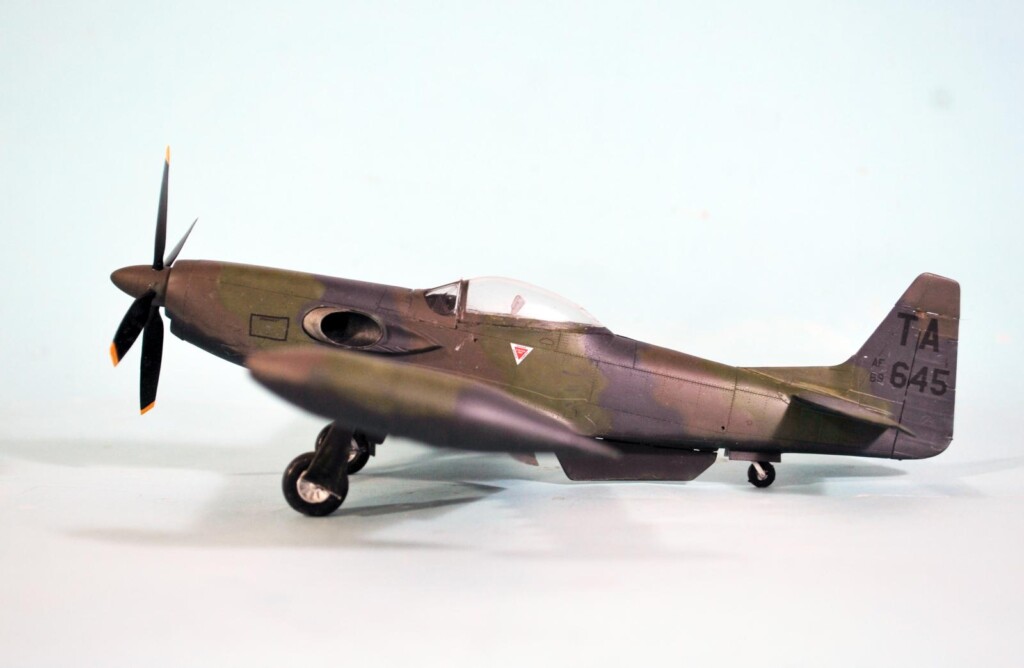
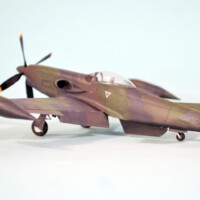
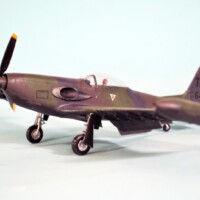
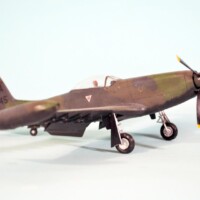


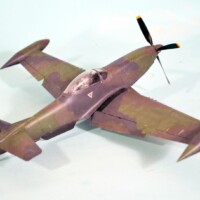
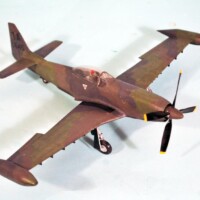
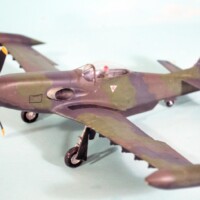
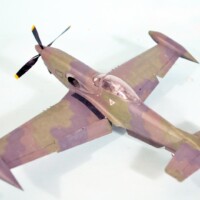
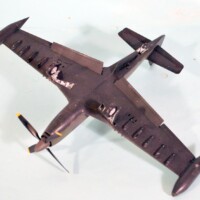
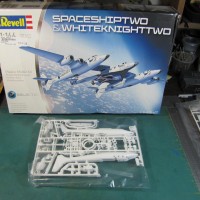
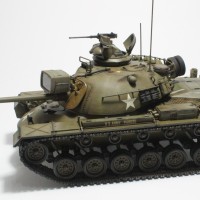
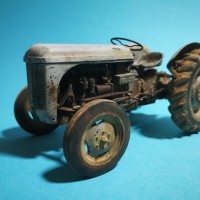
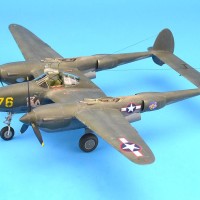
Hi Tom
That's an excellent build and what an interesting conversion. Where they ever used as racers because the end result does look very like one?
No - they were tested by the Air Force and that was it. Back in the 70s, there was no "turbine" or "turbo prop" class in air racing.
Very cool, Tom (@tcinla). It really looks a lot different than your standard P-51. I checked out Halberd Models after you first mentioned this conversion, and they have some really tempting stuff. Well done.
The XP-47H and the XP-72 "Superbolt" done with the Tamiya P-47 are REALLY tempting.
Looks great Tom. Halberd's resin casting is excellent. I've their Bf 109 W floatplane conversion and the resin casting is top notch.
Super conversion, amazing result and ditto write-up, Tom!
Very nice result, Tom. Looking forward to getting my first Halberd kits soon - they have some interesting stuff!
Nice.
Excellent work on this conversion, Tom @cinla
First time I heard about those Mustangs, very interesting to see that those airframs were still used for developmenet after so many years.
Great build and history as usual. I never knew they were powered by Lycoming T-55s. That's an engine I'm aquinted with. I was a helicopter engine mechanic in the service back in the mid 80s through the 90s. The T-55 is basically a scaled up Lycoming T-53L-13B, the engine used in the Huey and Cobra. The Cobras was a T-53L-703, more horse power. Great engines.
Really nice! I contacted Halberd about the release of their 1/48 XF-85. Looks like a REALLY good kit and I wanted to build one for myself. Andrey said it was delayed until next year because the folks that are doing the decals had been drafted and were at the front killing Russkies.
Great Mustang!
Very cool conversion. I read about Halbred's conversion kits about a year ago and its nice to see one done. You did a good job on this Tom. Everyone mentions their potential use in the Air Force and how they were never used in service. What I wonder is how these might have stacked up against the original foes (ME-109s, FW-190s, and ME-262)? Now that would have been interesting to read about.
I knew a guy who flew with the Zorros over the Trail in VN, who had a chance to fly one of these, and he told me it would have been perfect for their job of lighting up a convoy for the A-26s and Skyraiders - light, fast, quiet, and enough ordnance to do damage. Which was what I was doing here with this one, doing the "test mission aircraft" that flew with the Zorros (if only).
Impressive and very convincing result! A pleasure to see your high modelling skills on such a beautifully shaped aircraft, congratulations!
Fantastic work and thorough background information as usual, Tom! An idea "ahead of its time" with all the recent discussions of making more use of such smaller prop aircraft for military operations!
Wanted to build one way back before I had to try and "focus" a bit on build plans- ha ha ha! I think I generally have been able to to stay in the US NAVAIR lane...kinda!
Sharp work, Tom. I never knew these were considered for service in the 80s. I thought they were a late 60s-early 70s project and that was it.
Very cool project! Finished well as always.